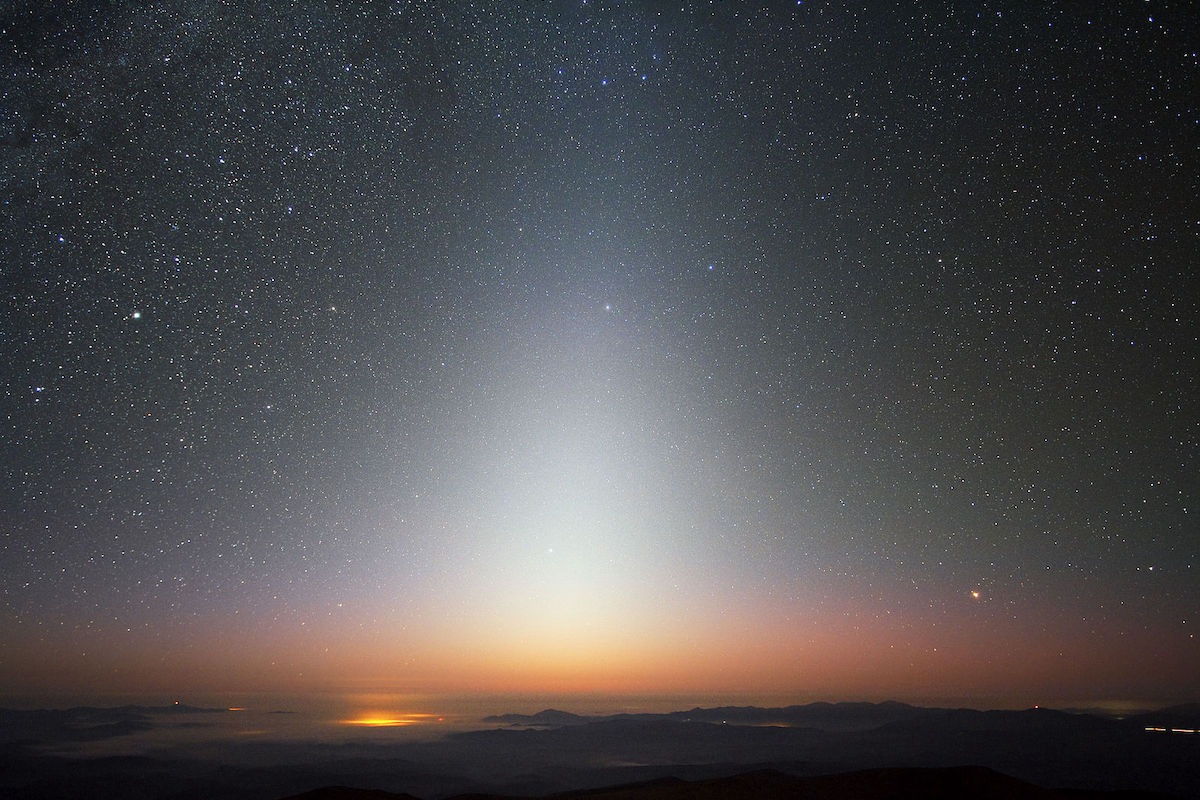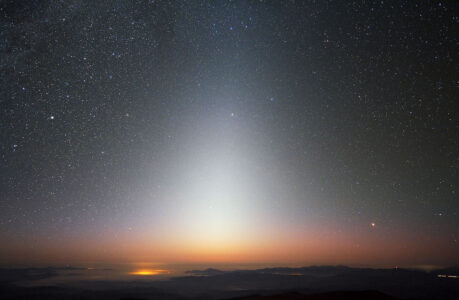The universe is a vast expanse of wonders that never fails to amaze us. One such wonder that never fails to captivate us is the Zodiacal Light. This celestial spectacle is a unique phenomenon that occurs in the night sky and is visible to the naked eye under the right conditions. In this chapter, we will dive into the mysteries of the Zodiacal Light and explore its origins, characteristics, and cultural significance.
What is Zodiacal Light?
The Zodiacal Light is a faint, cone-shaped light that appears in the sky after sunset or before sunrise. It is visible as a band of light that extends upwards from the horizon and follows the ecliptic, the path that the Sun takes across the sky. The light is most visible during the months of March and April after sunset, and during September and October before sunrise.
The Zodiacal Light gets its name from the zodiac, the belt of constellations that lie along the ecliptic. The light is caused by sunlight reflecting off dust particles in the inner solar system, creating a diffuse glow that is visible to the naked eye.
Origins of Zodiacal Light
The origin of Zodiacal Light can be traced back to the formation of the solar system. As the Sun and the planets were forming, dust and debris were thrown out into space. This debris, which consisted of small dust particles, rocks, and ice, settled into a disk-shaped cloud around the Sun known as the protoplanetary disk.
Over time, this disk of debris began to coalesce into larger bodies, such as asteroids and planets, leaving behind a population of smaller dust particles that remained in orbit around the Sun. These dust particles, ranging in size from a few microns to a few millimeters, became the source of Zodiacal Light.
Characteristics of Zodiacal Light
The Zodiacal Light is a faint and diffuse band of light that extends upwards from the horizon, following the path of the ecliptic. It is most visible in the spring and fall, when the ecliptic makes a steep angle with the horizon. The light appears as a cone-shaped glow, with its widest point near the horizon and tapering towards the zenith.
The intensity of the Zodiacal Light varies depending on several factors, such as the angle of the ecliptic with respect to the horizon, the time of year, and the brightness of the Moon. The light is most visible under dark, clear skies, away from light pollution.
Cultural Significance of Zodiacal Light
The Zodiacal Light has played a significant role in human culture throughout history. It has been mentioned in ancient texts, such as the Bible and the Quran, and has been depicted in art and literature for centuries.
In many cultures, the Zodiacal Light was associated with supernatural or spiritual phenomena. In ancient Egypt, it was believed to be the path of the god Horus, while in Hinduism, it was associated with the goddess Kali. In some Native American cultures, it was considered a trail left by the Great Spirit.
Today, the Zodiacal Light continues to inspire awe and wonder in people around the world. It is a reminder of the vastness and complexity of the universe, and our place within it.
The Zodiacal Light is a mesmerizing and enigmatic celestial spectacle that has fascinated humans for centuries. Its origins can be traced back to the formation of the solar system, and its characteristics are influenced by various factors, such as the angle of the ecliptic and the brightness of the Moon. The cultural significance of Zodiacal Light adds to its allure and mystery, reminding us of the timeless fascination that humans have held for the night sky.
Despite its faintness, the Zodiacal Light remains a source of inspiration and awe for astronomers and skywatchers alike. It serves as a reminder of the beauty and complexity of the universe, and encourages us to explore the wonders that lie beyond our planet.
As we continue to uncover the mysteries of the cosmos, the Zodiacal Light will undoubtedly remain a captivating subject of study and contemplation. Its ethereal glow will continue to inspire us, filling us with a sense of wonder and appreciation for the marvels of the universe.

